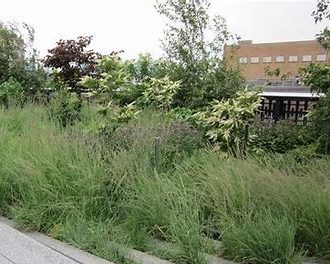By Susan Harkins
A few summers back, I stopped outside a local nursery to admire a huge pot of Sporobolis heterolepis, commonly known as prairie dropseed. I gently caressed the long thin green leaves and tiny brown seeds. Not only was the tactile sensation comforting, the released fragrance, similar to cilantro, was mesmerizing. It grows in my yard, but I thought to myself then that the next year I would have a pot of dropseed on my porch. Someone knew what they were doing when they positioned that pot of dropseed at the entrance to the store.
This native grass is aptly described as an elegant fountain. Its fine-textured arching leaves grow up and curve down toward the earth. Loose branching clusters of airy florets produce tiny fragrant brown seeds. This time of year, when our fields and yards are a blaze of yellow and purple, dropseed offers lovely spots of gold, orange, and pink.
Botany
Sporobolis heterolepis is a warm-season deciduous bunchgrass, which simply means it grows in clumps. The 3 to 8 inch panicle comprises multiple branches that terminate in small spikelets. A single floret has three reddish anthers and a short feathery stigma when in bloom. Once pollinated (by wind), the floret produces a mostly round small seed in a hard hull. It’s a dense turf with alternate basal leaves.
Culture
This drought-tolerant native prairie grass is often used to fight erosion and control water runoff because of its deep fibrous root system. As you might expect, it grows well in dry soil and full sun. Because it tolerates heavy clay, it’s a good species for Kentucky gardens. It also grows in glades and open areas left by human development.
I’ve found that this perennial likes a bit of room. If too crowded, they don’t reach their normal 2 to 3 feet in height and spread.
Propagation
Seeds are best collected in October before they drop from their hulls. They germinate in cool weather so sow in the late fall or early spring; they require stratification if sown in the spring. (An easy stratification method is to sow in dry soil for at least ten weeks.) Although Sporobolis heterolepis grows easily from seed, it’s not a prolific self-seeder, so don’t expect it to fill in as ground cover. Division is possible, but difficult because of its dense root system. Many experts recommend divisions over seeds, but I’d rather seed heavily or buy mature plants than take a chain saw to the roots because that’s the only way I’d be successful!
In your garden
Due to its late blooming florets, this species is a fall beauty, and its arching leaves lend elegance almost year round. Snow doesn’t flatten the leaves and the graceful leaves and seeds poking through a new snow are lovely.

Plant in mass or as a single focus point. However, I don’t recommend them as a formal border because this species is diverse in form from plant to plant. They’re not a cookie-cutter plant. Plant 18 to 24 inches apart and don’t crowd them. It can hold its own against Andropogon gerardii, big bluestem, and Sorghastrum nutans, Indian grass, but don’t allow nearby taller plants to block the sun; placement is important when combining Sporobolis heterolepis with taller prairie grasses.
Patience is a virtue, so they say, and you’ll need it with this species when growing from seed or plugs. It takes nearly five years to fully develop from seed, so I recommend buying large plants if you want a quick display from this plant. Once established, this grass requires little care, but keep it well watered the first year. Dethatch it once a year and remove weeds; that’s it!
If you garden for wildlife, the seeds persist into winter providing food for birds. Its clumping nature provides habitat and protection for birds and small mammals and nesting material and shelter for native bees.
Although it’s slow to establish, Sporobolis heterolepis is one of the showiest bunch grasses. It fits into almost any landscaping theme, from formal to rustic. It’s a great plant for restoration projects and is trouble free once established. But for me, the fragrance is its most endearing quality—put a pot on your porch and enjoy.
